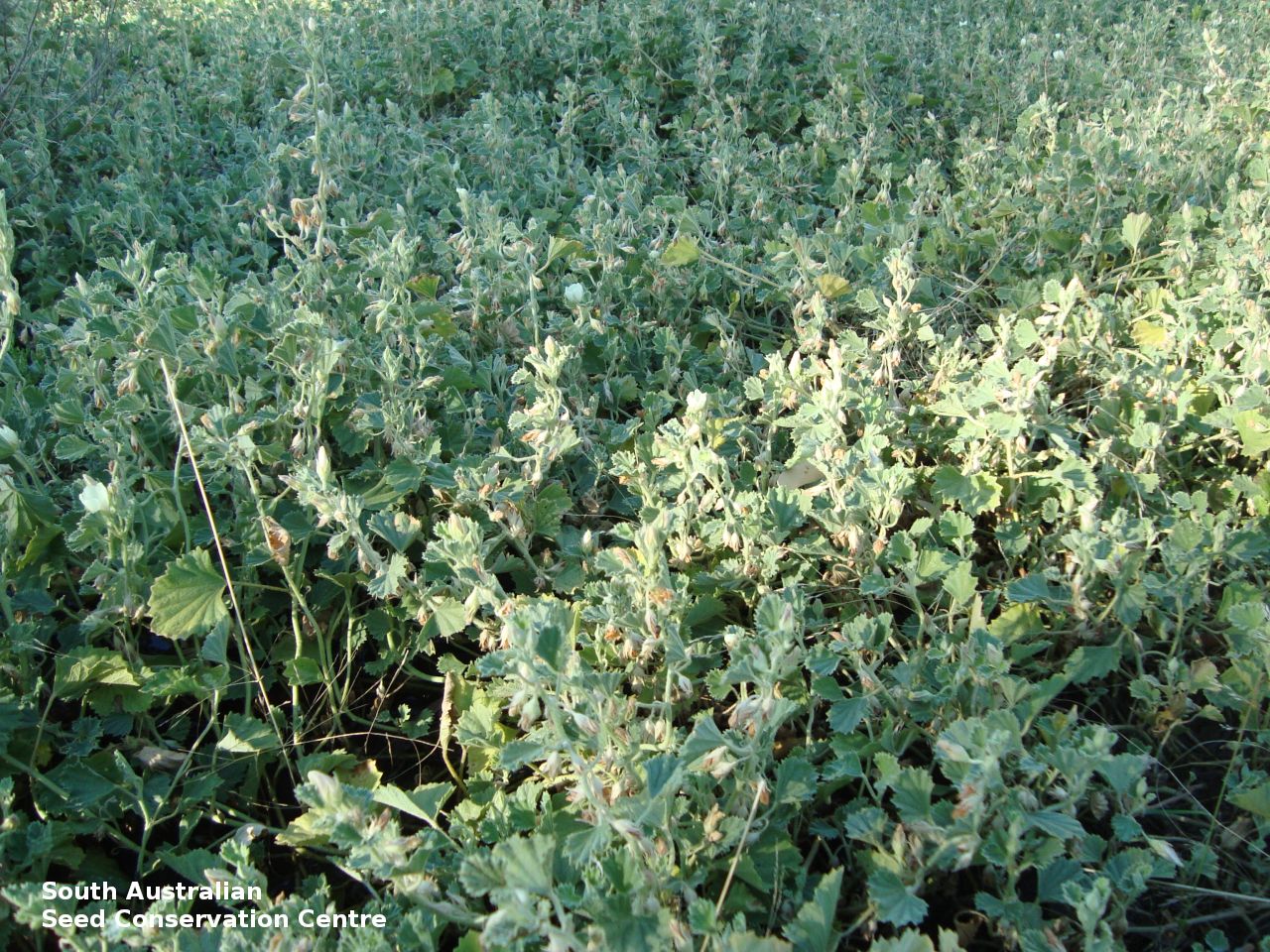
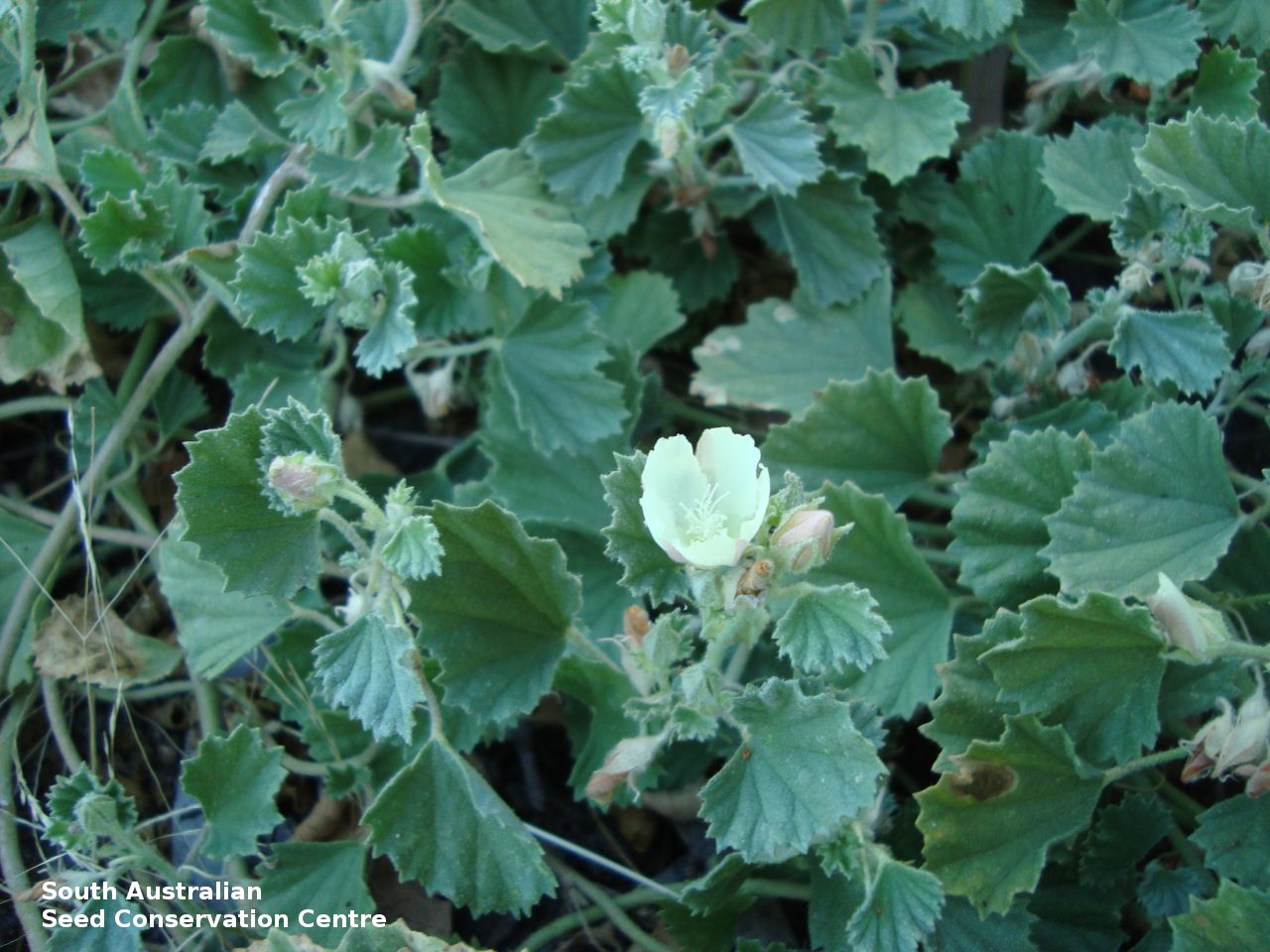
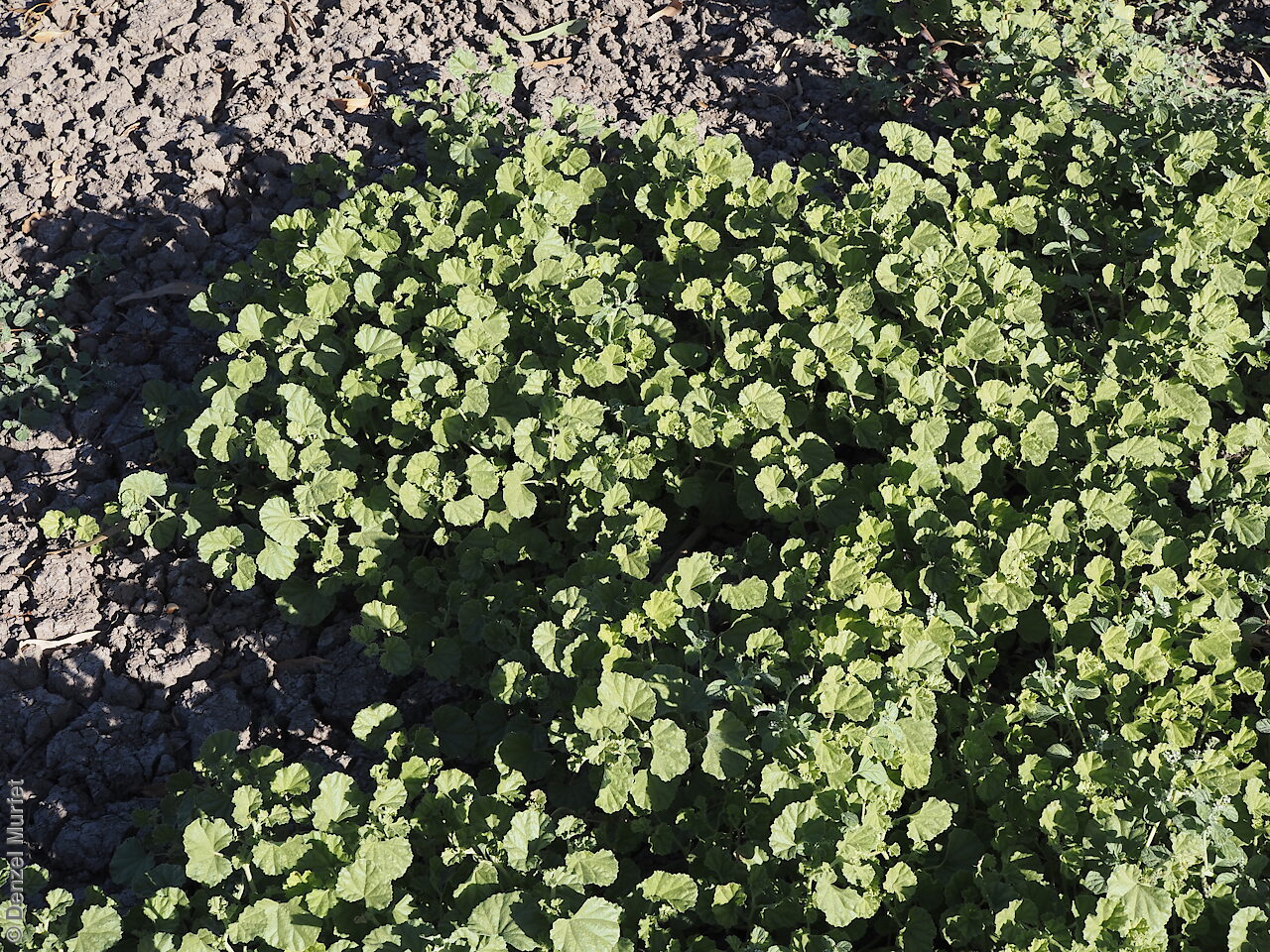
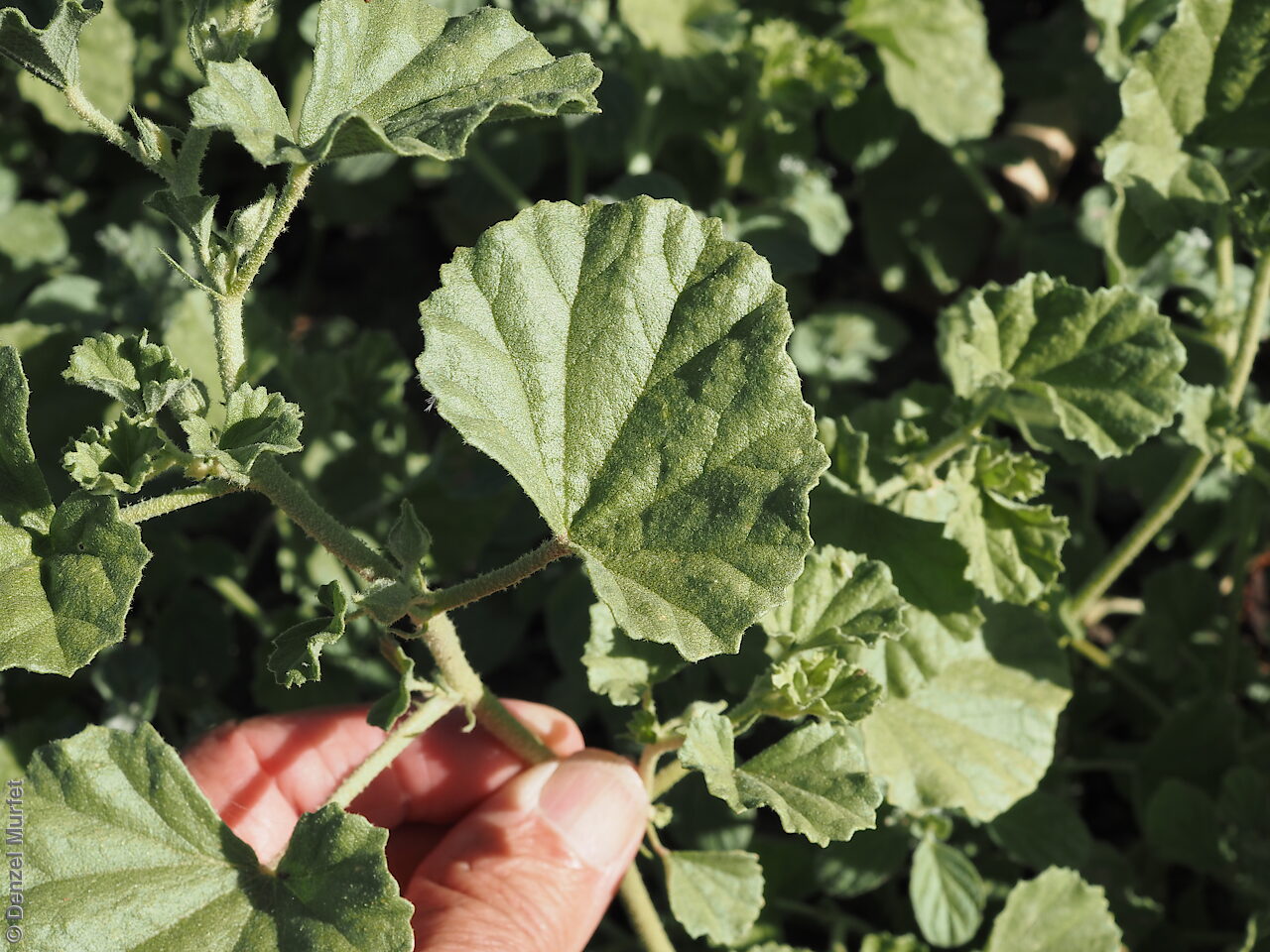
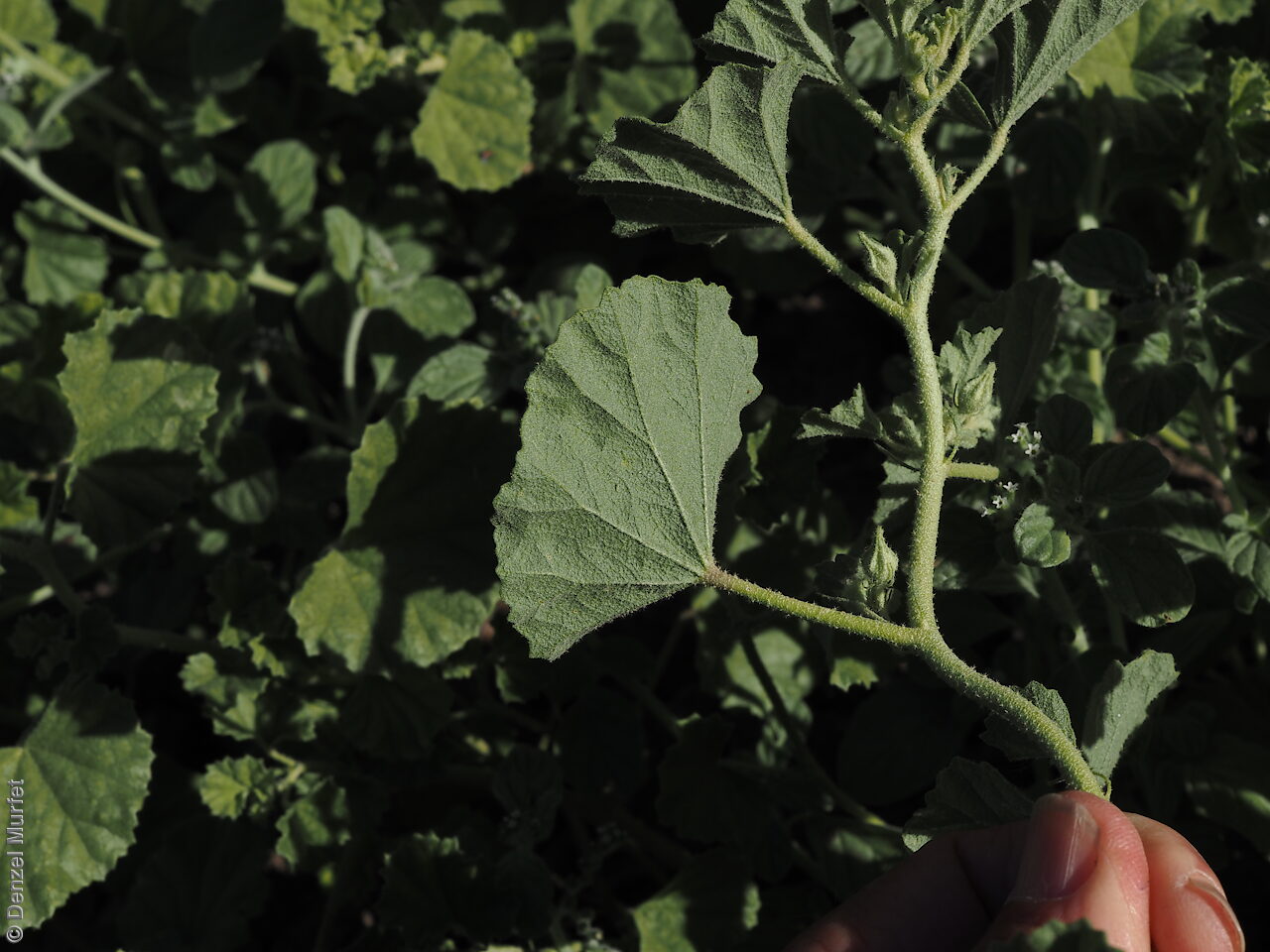
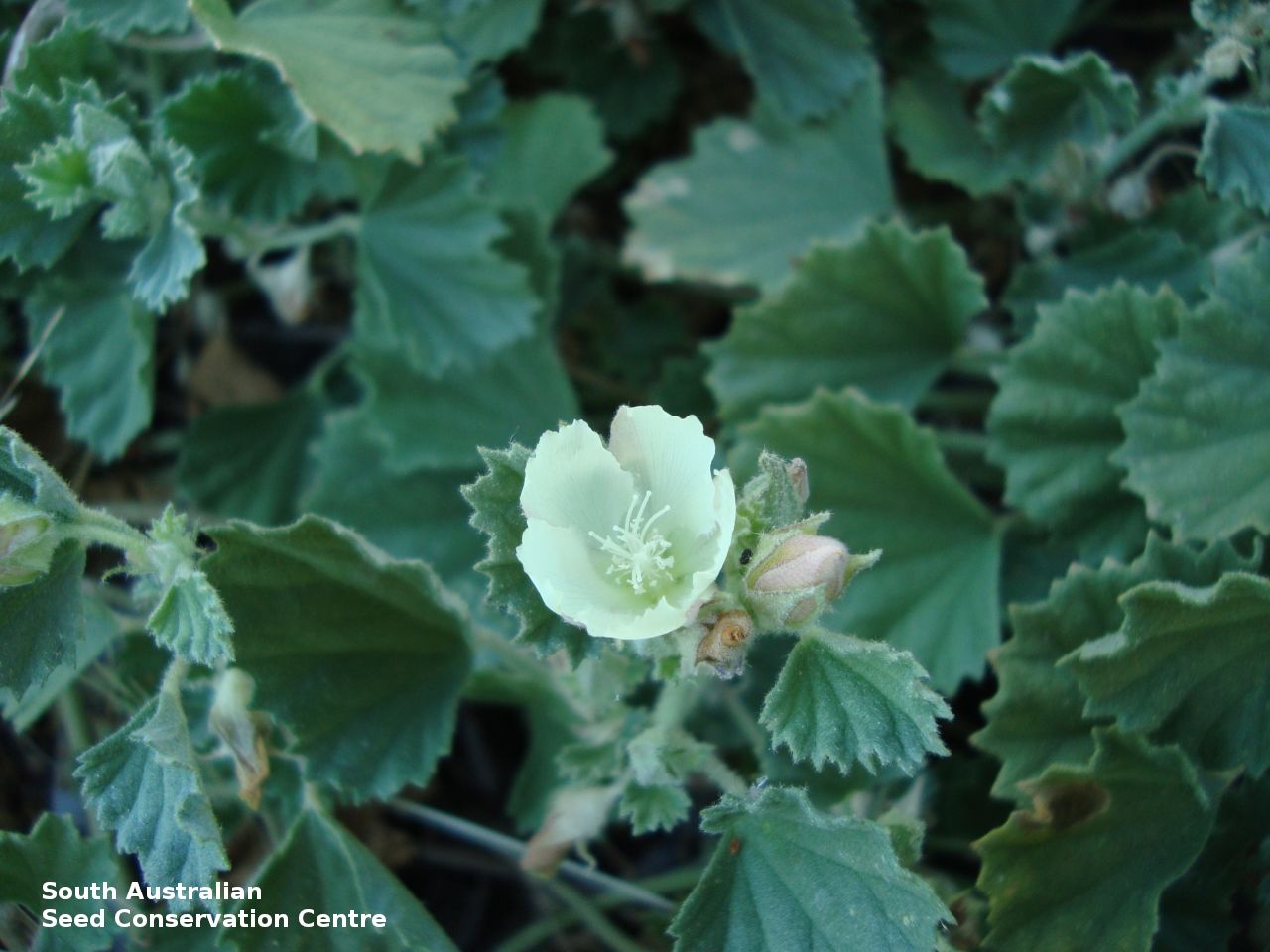
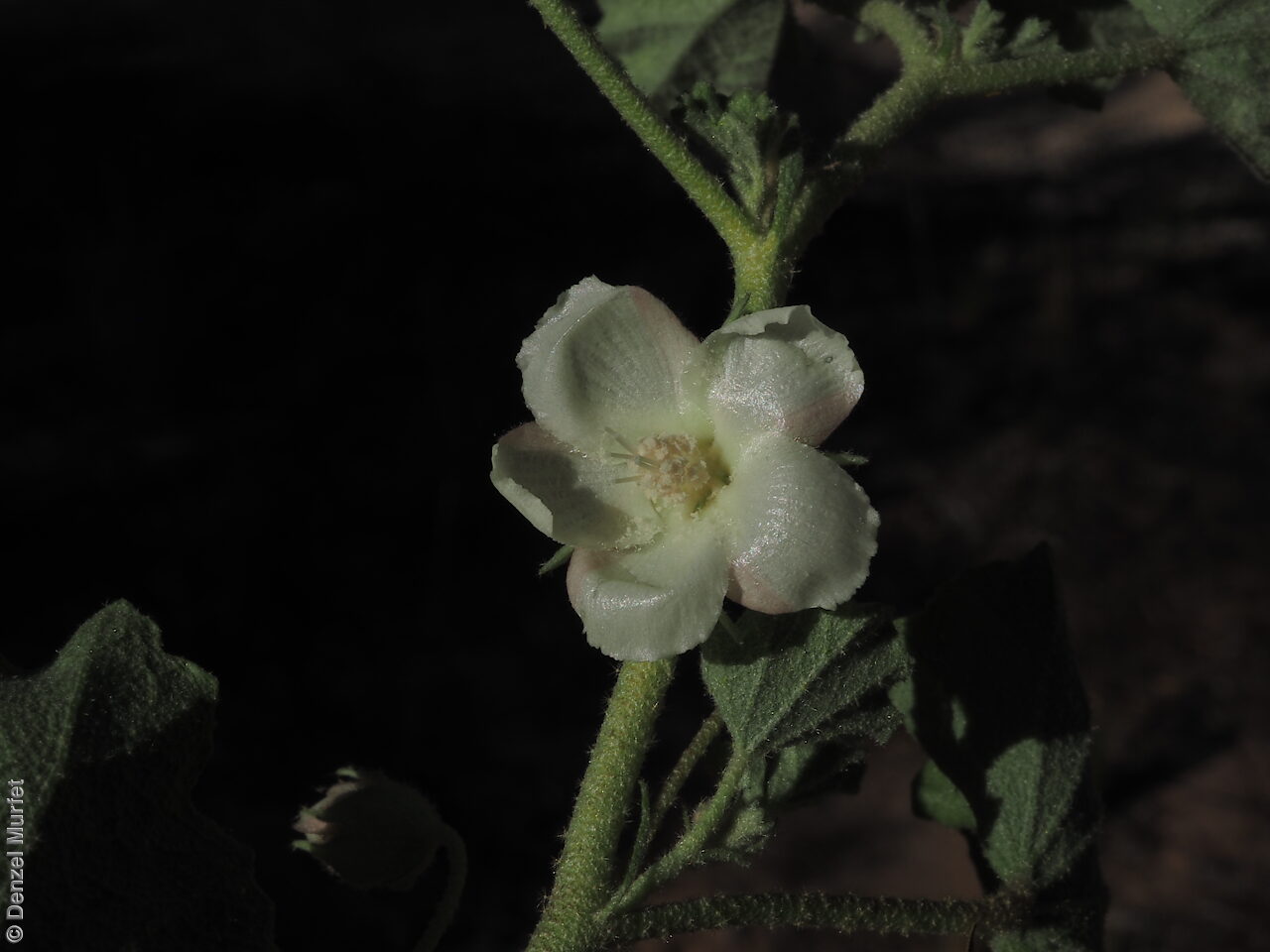
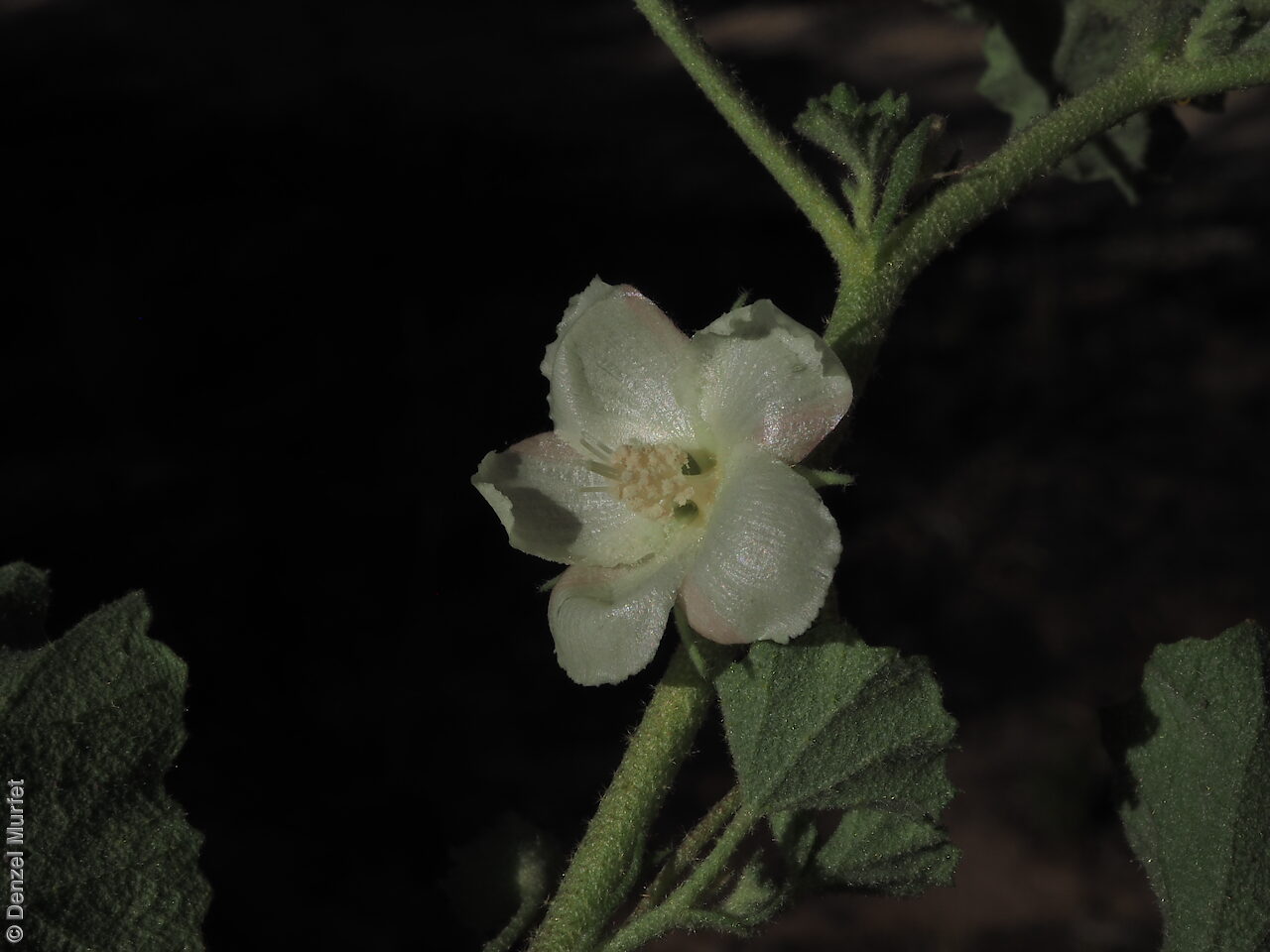
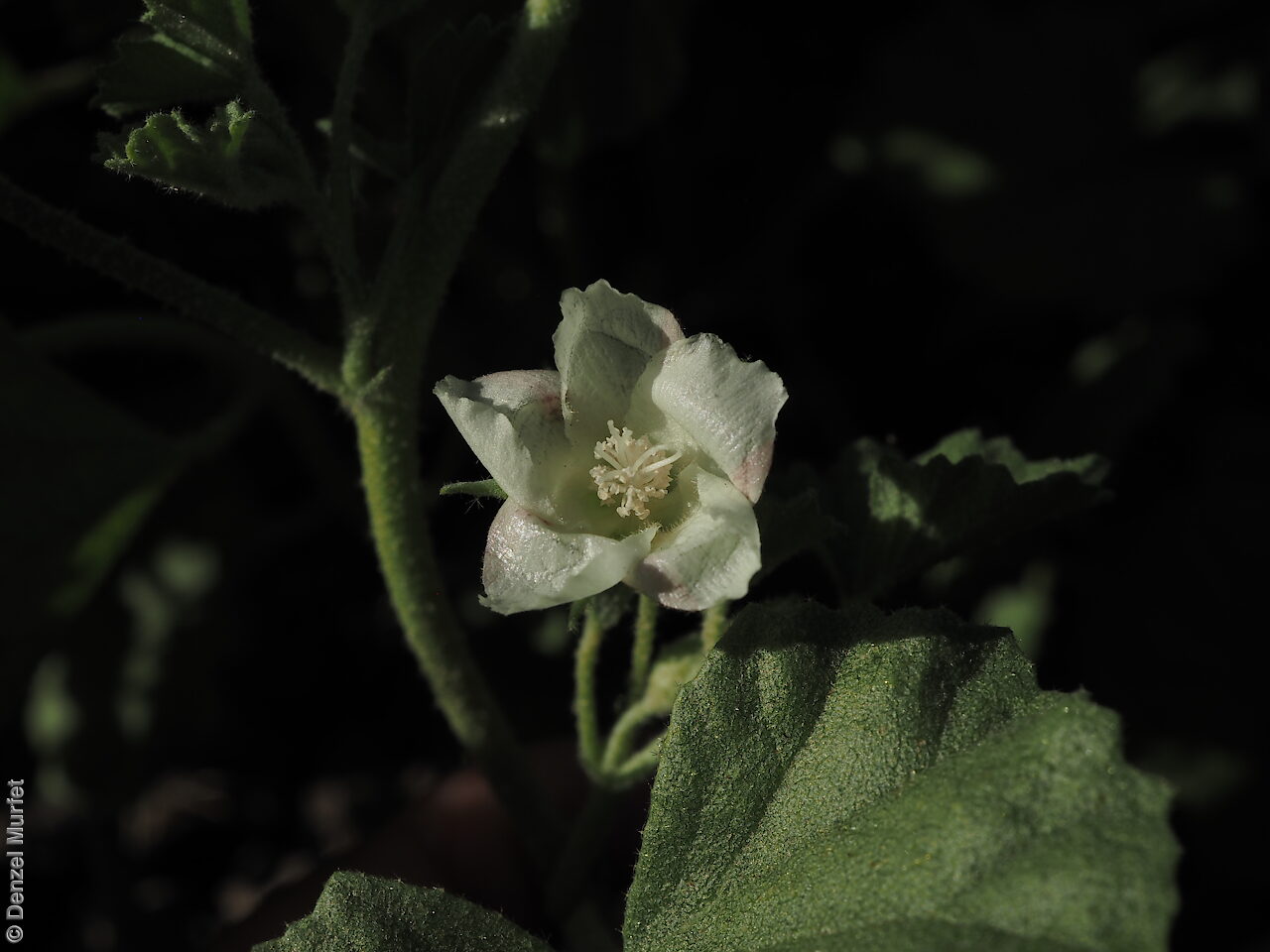
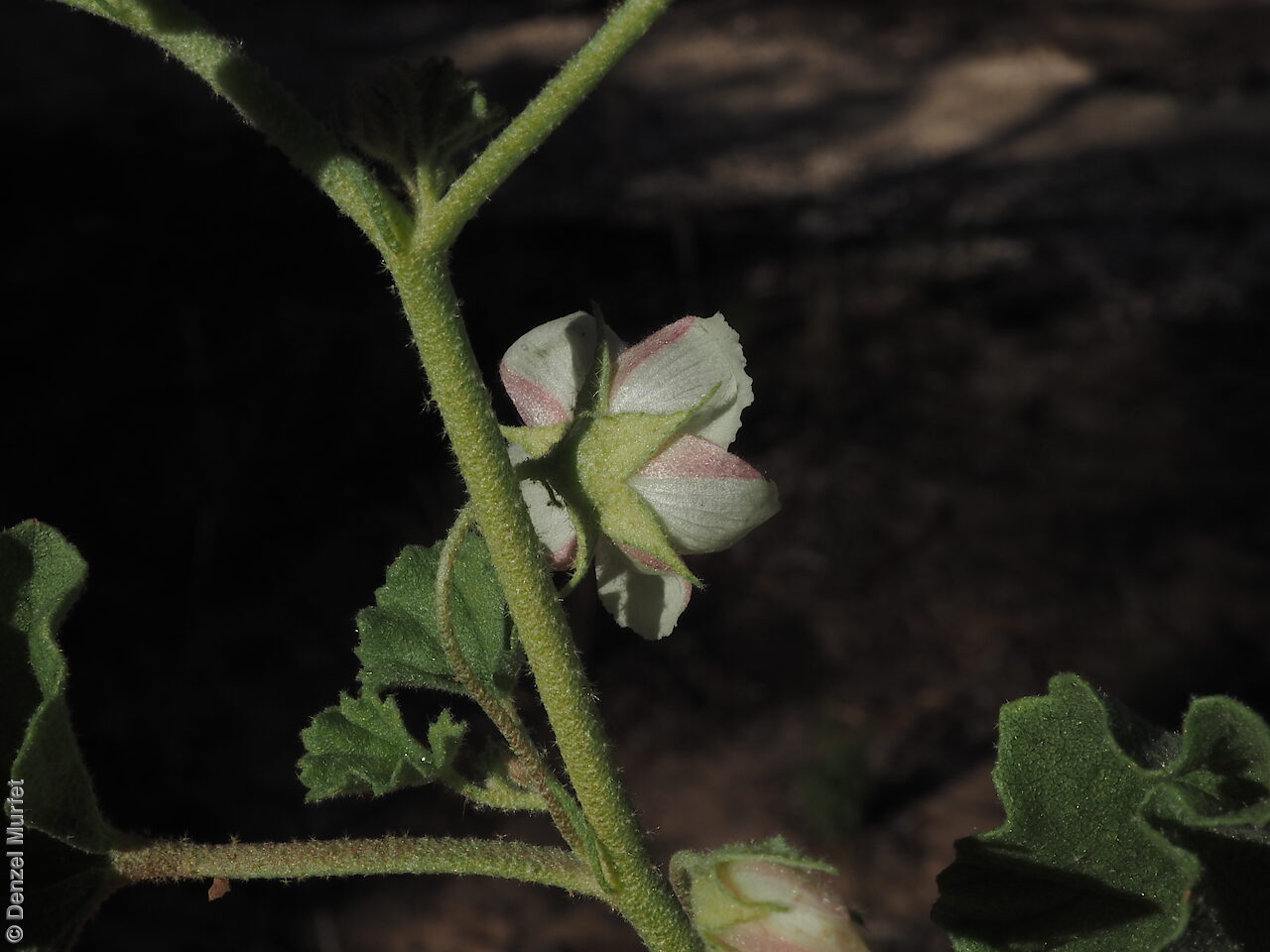
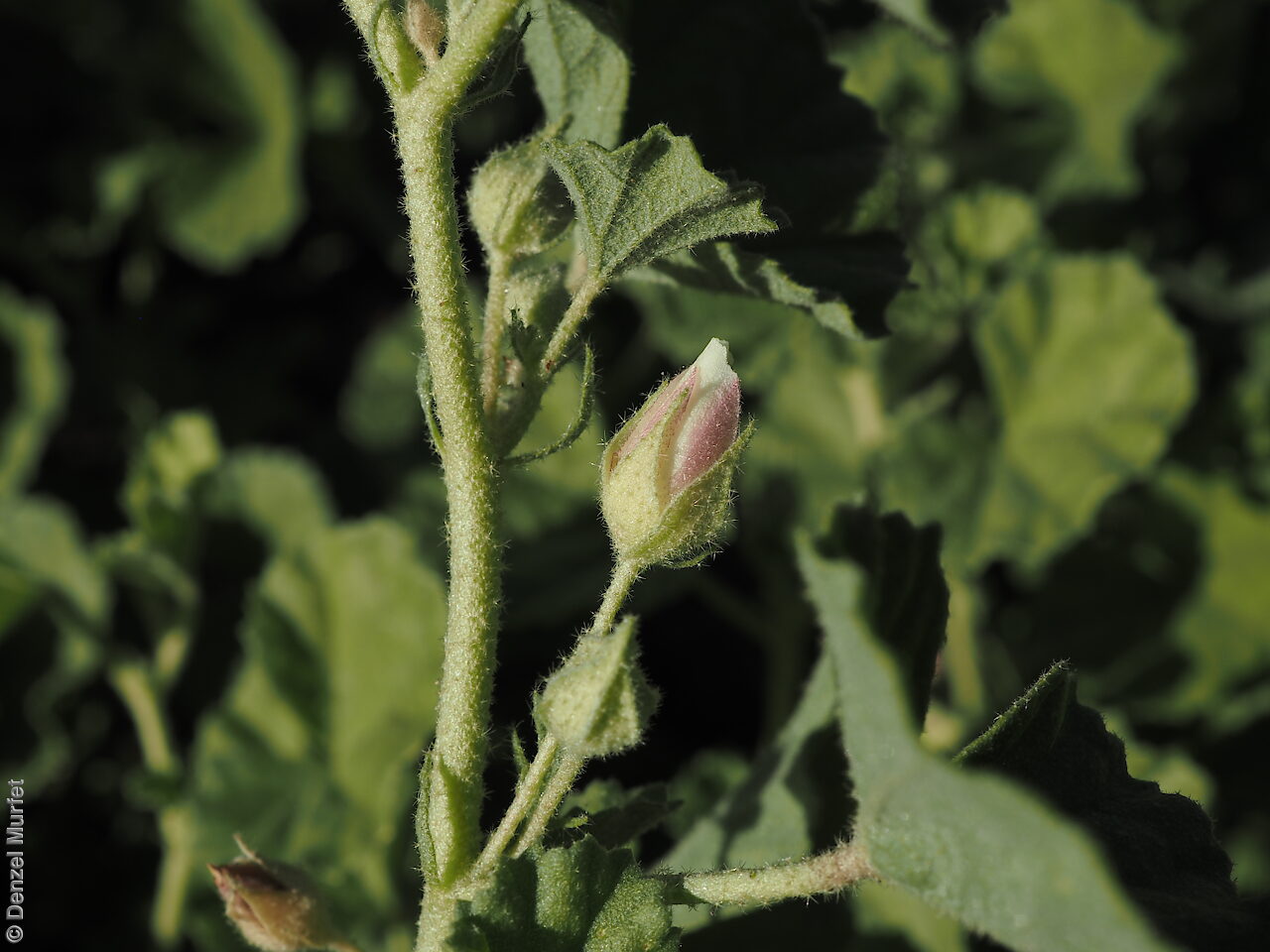


Botanical art
Prior names
Malvella leprosa var. hederacea
Sida hederacea
Sida leprosa
Sida leprosa var. hederacea
Malva hederacea
Malva leprosa
Common names
Ivy-leaf Sida
Alkali Sida
Etymology
Malvella from the genus Malva and the Latin diminutive 'ella'; indicating a small mallow like plant. Leprosa from the Latin 'leprosus' meaning scaly or scabby; referring to the scaly appearance of the plant.
Distribution and status
Found in the mid north and Murray regions in South Australia, growing in irrigated crop land and channel banks usually on alkaline soils.Also found in New South Wales and Victoria. Introduced. Uncommon in South Australia. Uncommon in the other states.
Herbarium regions: Northern Lofty, Murray, Yorke Peninsula
NRM regions: Northern and Yorke, South Australian Murray-Darling Basin
AVH map: SA distribution map (external link)
Plant description
Semi-erect perennial herb to 30 cm high with a strong tap root and hairy stems giving the plant a greyish (scaly) appearance. Leaves alternate, asymmetrical fan-shaped, to 3.5 cm long and 4.5 cm wide, margins irregularly dentate, upper surface olive-green, lower surface paler and more densely hairy. Inflorescence 1 or few in the axils of the leaves on a long stalk to 2 cm with creamy flowers. Flowering between December and May. Fruits are brown disc-shaped capsule to 4 mm diameter with 6-10 seed segments. Seed embryo type is folded.
Seed collection and propagation
Collect seeds between February and July. Collect capsules that are drying off and starting to turn brown with hard seeds inside. Place the capsules into a tray and leave to dry for a week. Then rub the capsules by hand or with a rubber bung to dislodge the seeds. Use a sieve to separate the unwanted material. Store the seeds with a desiccant such as dried silica beads or dry rice, in an air tight container in a cool and dry place. This species has physical dormancy that needs to be overcome for the seed to germinate (e.g. nicking or softening the seed coat).